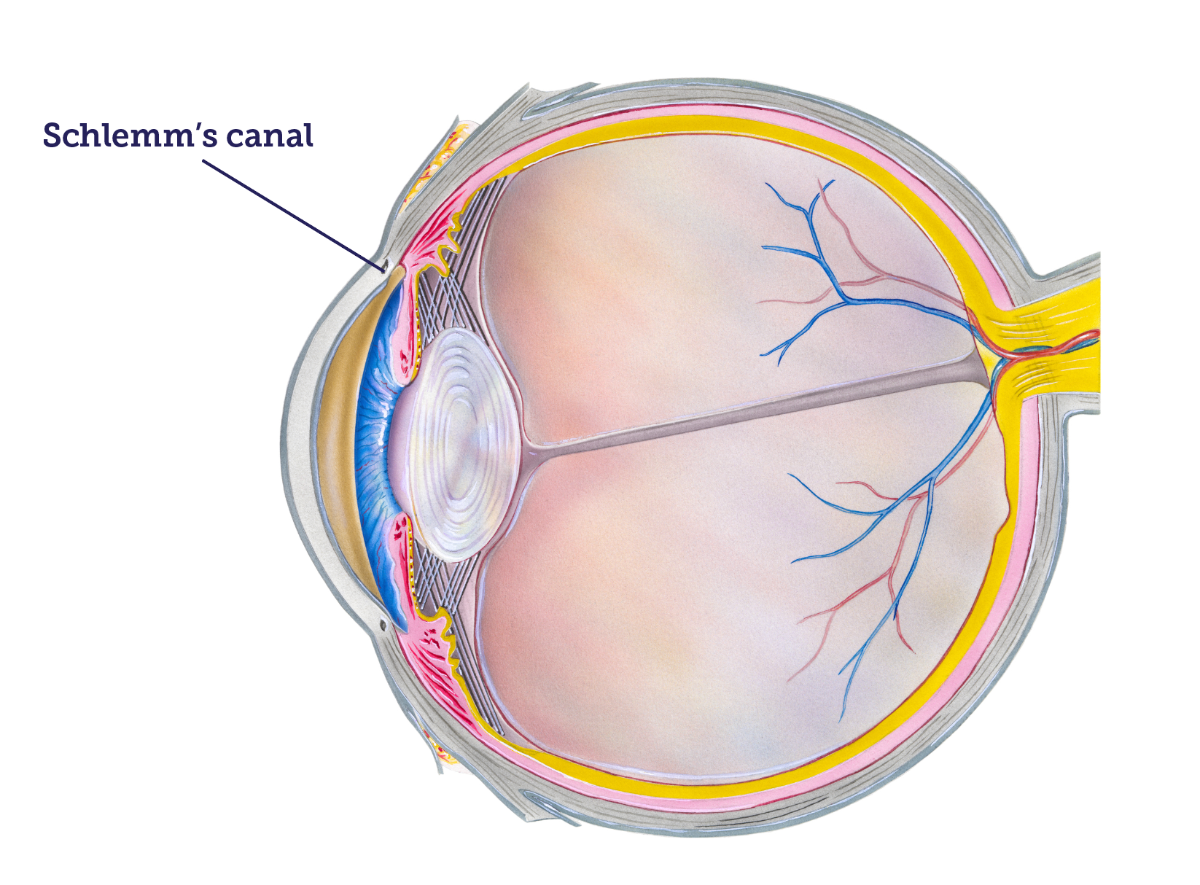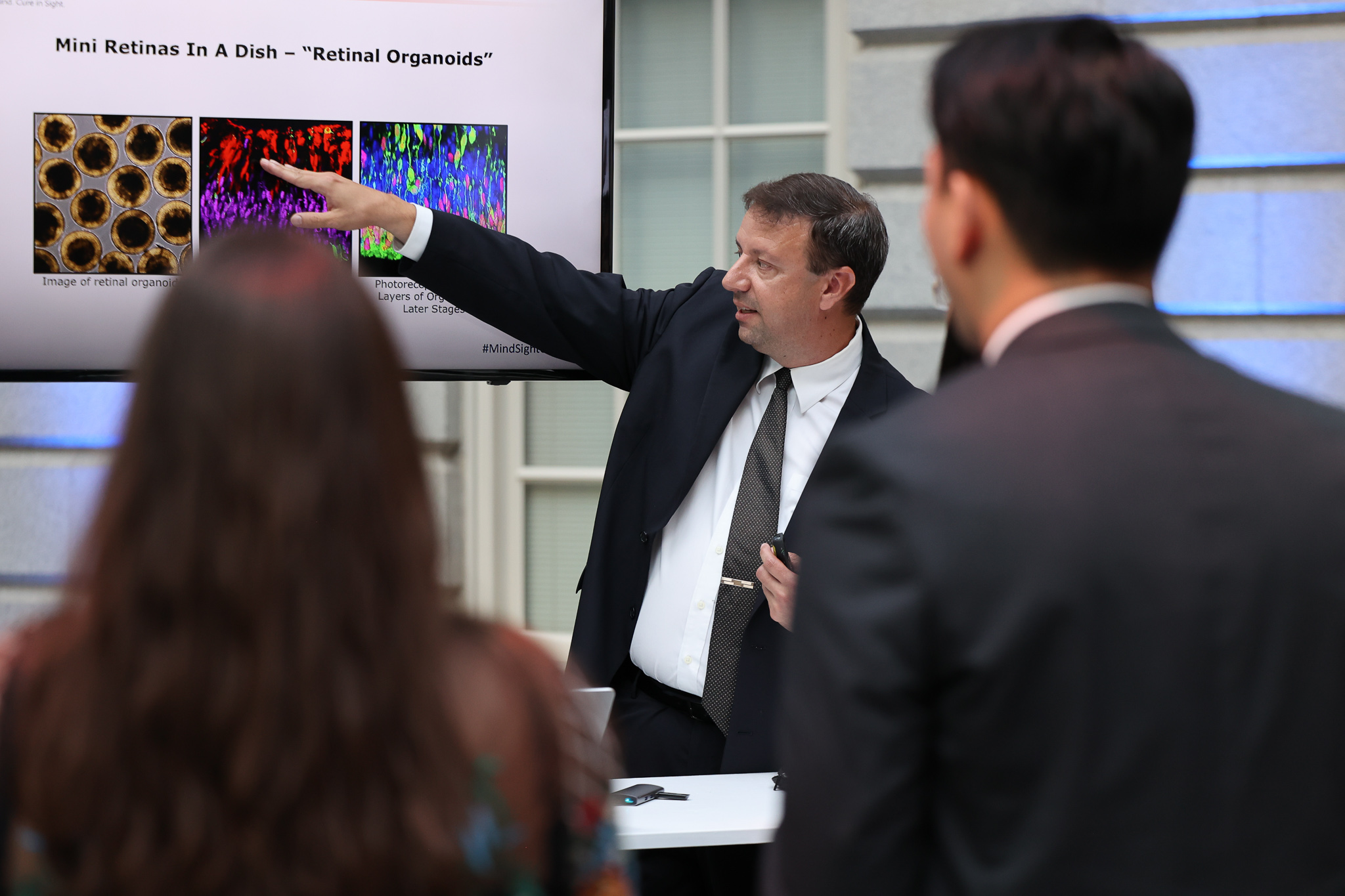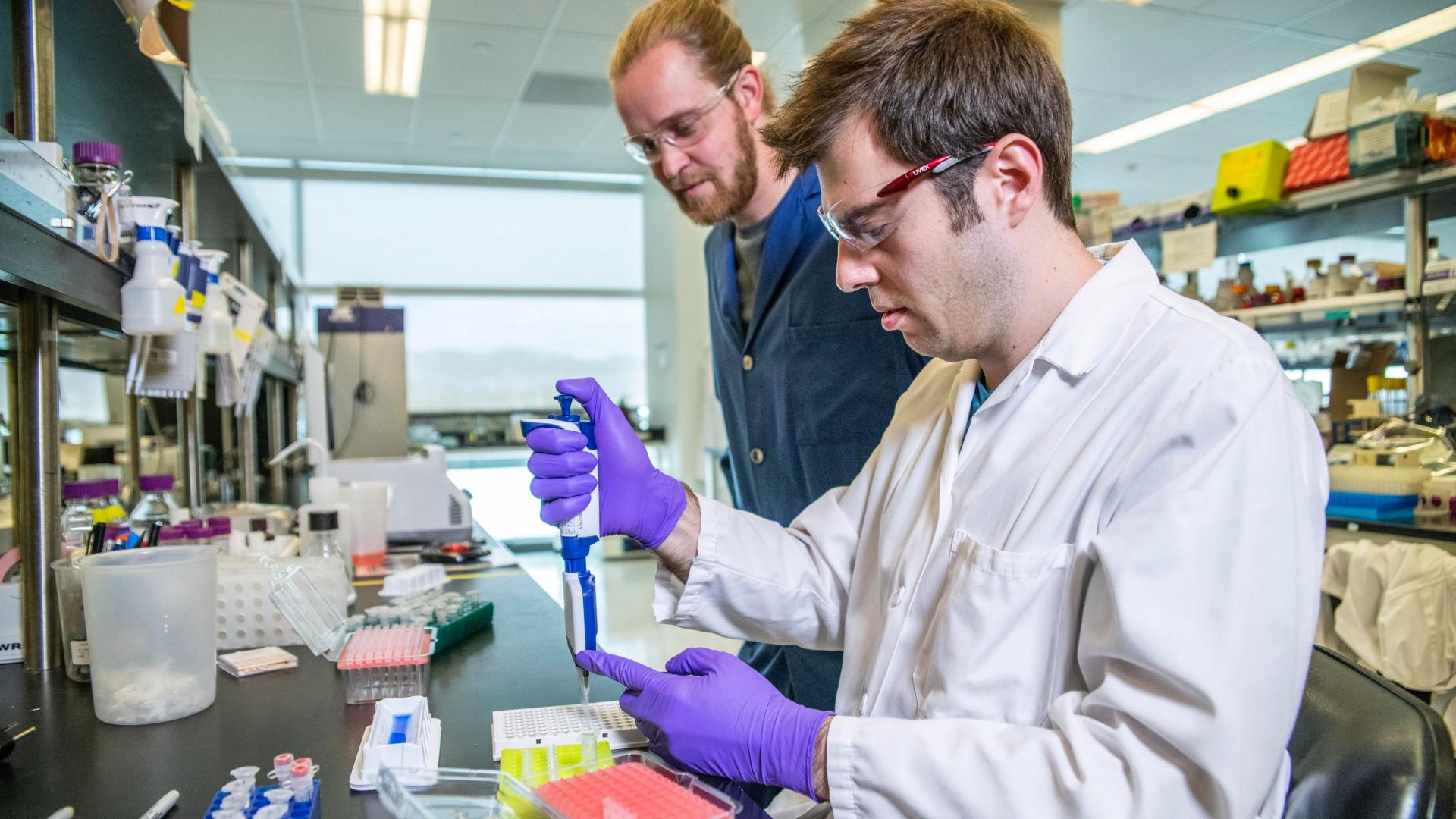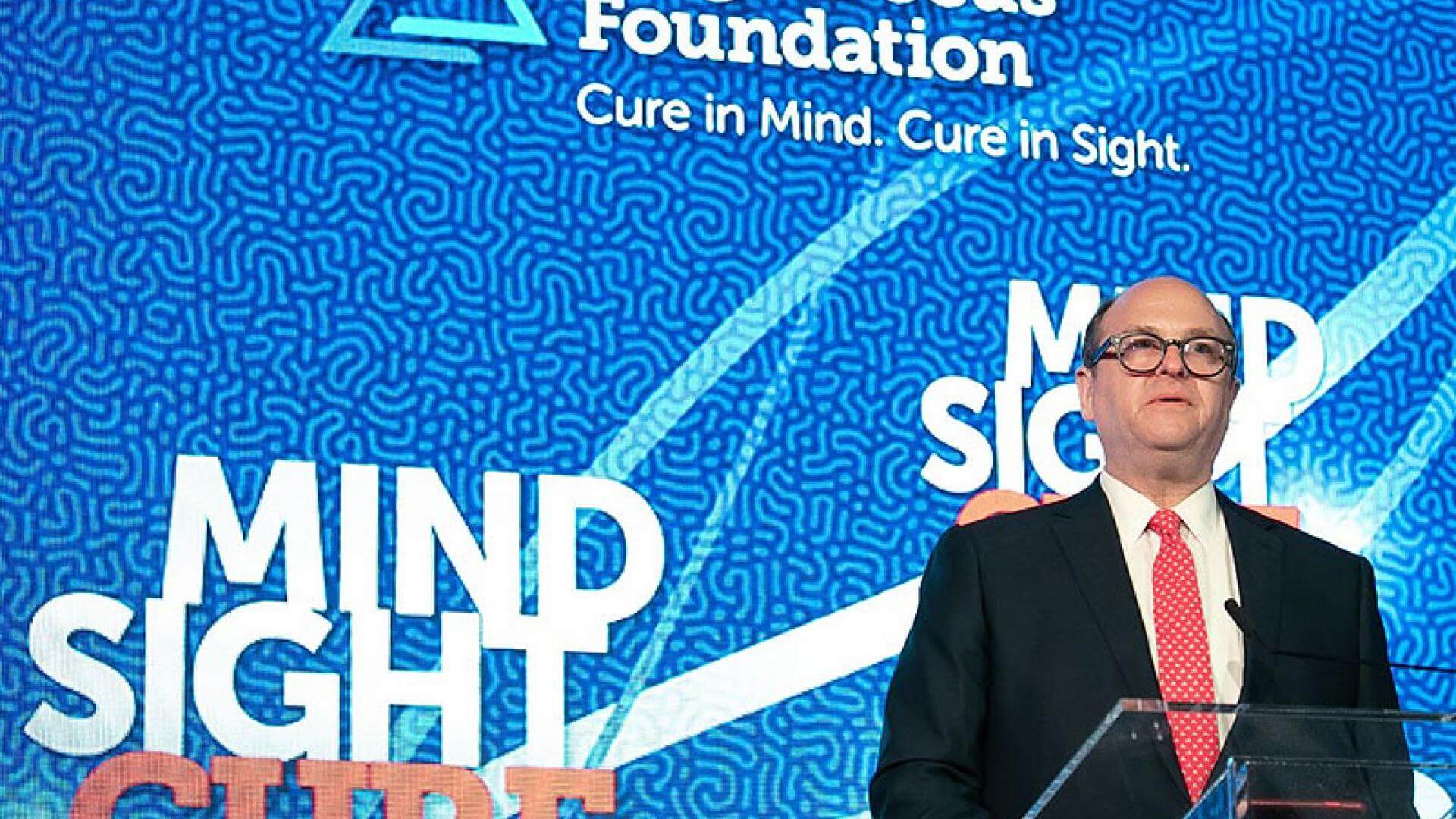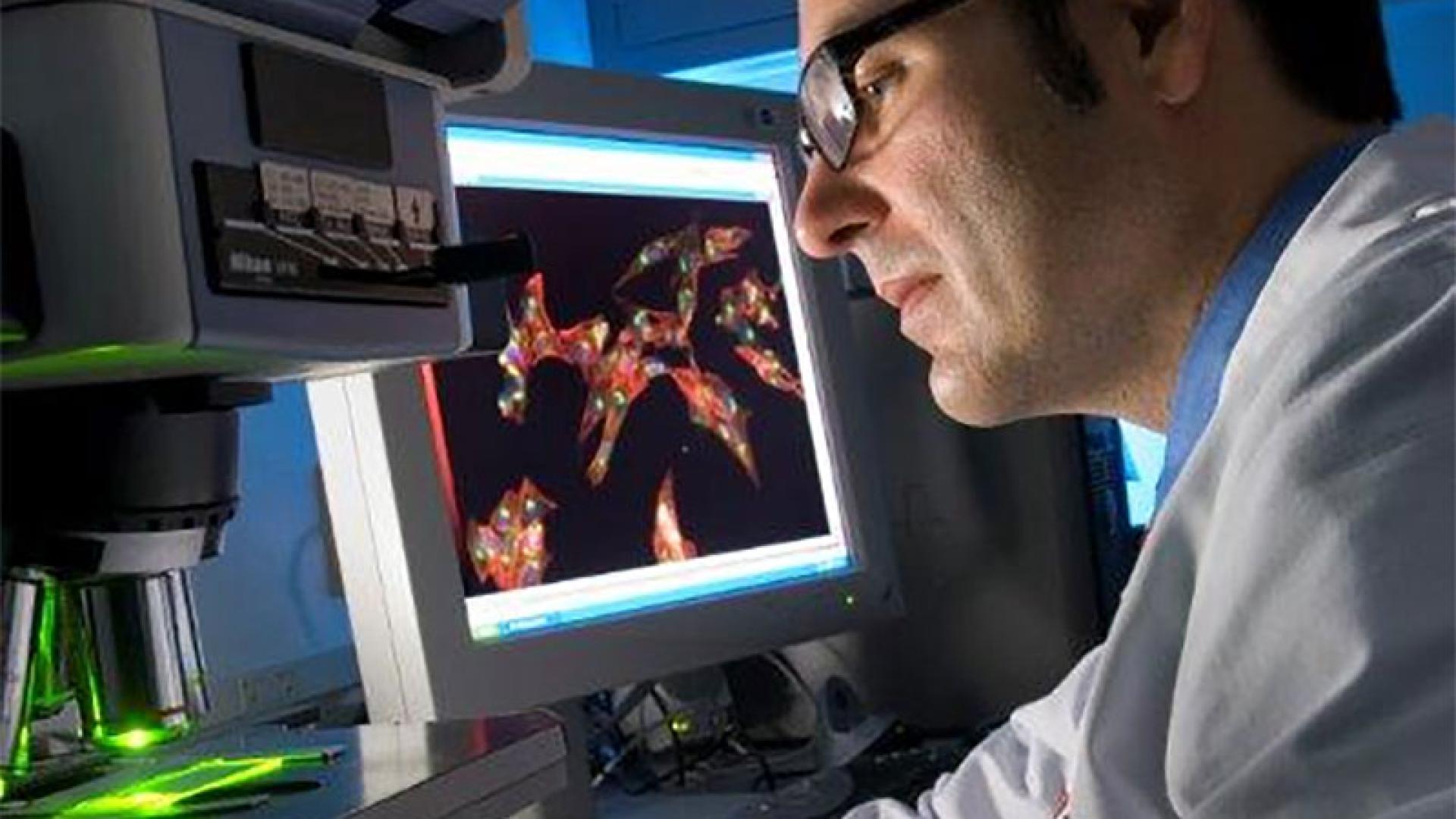
Vision loss in glaucoma results from the slow decline and death of retinal ganglion cells in the eyes—nerve cells (neurons) that the human eye cannot regenerate. Zebrafish, however, can regrow their retinal ganglion cells, making them valuable models for researchers to learn about the genetic forces behind neuron regeneration in the eye.

A new study funded by BrightFocus Foundation uncovered several genes that play critical roles in regenerating retinal ganglion cells in zebrafish. The researchers believe the insights gained from observing these genes could lead to new therapeutic strategies for treating glaucoma.
The study, published in Development, was led by BrightFocus Foundation National Glaucoma Research grant recipient Jeff Mumm, PhD, professor of ophthalmology at Johns Hopkins University. His graduate student at the time, Dr. Kevin Emmerich, was the first author on the study. The research team developed a novel zebrafish model that allowed them to view retinal ganglion cell regeneration up close.
Making the Eye Repair Itself
Dr. Mumm has been studying neuron regeneration for his entire career, seeking to bridge the gap between regenerative biology and regenerative medicine.=
“The field of regenerative biology is focused largely on the ‘big picture,’ how limbs, organs, and even whole organisms, can regenerate from the leftover bits following large-scale injuries,” Dr. Mumm said in an interview with Development. “Conversely, the field of regenerative medicine—brought about by the stem cell revolution— is focused more on replacing specific cell types lost to degenerative disease rather than regenerating an entire limb or organ.”
During Dr. Mumm’s time as a postdoctoral researcher, he realized these two fields “have a lot to learn from each other” and set out to expand the research tools available to study cell regeneration in the lab.
This latest study advances a larger project aimed at identifying the genes required to regrow retinal ganglion cells in people with glaucoma. He is using zebrafish models to power large-scale genetic studies and investigate strategies for regenerating specific subtypes of retinal ganglion cells.
Dr. Mumm hopes what he learns will point to new strategies for giving human eyes the power to repair themselves—just like they do in fish.
A Most Unexpected Finding
Dr. Mumm and his colleagues identified 18 genes that influence retinal ganglion cell regeneration. Specifically, they observed that seven of the genes slowed the regeneration process, while the other 11 accelerated it. The researchers also discovered, much to their surprise, that several genes previously found to promote regeneration in the eye are unnecessary for the regrowth of retinal ganglion cells.
Our long-term goal is to apply lessons learned from zebrafish toward therapies for restoring visual function to patients,” Dr. Mumm said.
His team used several advanced technologies to complete the study—including the gene-editing tool CRISPR/Cas9. To do this, Dr. Emmerich had to overcome the challenge of editing 100 genes believed to play a role in regenerating retinal ganglion cells.

“Performing any type of large-scale drug or genetic screen, where we essentially test as many things as we possibly can to see what has an effect, can be draining,” Dr. Emmerich shared with Development. “The CRISPR/Cas9 screen required a regimented weekly schedule to be performed every week for about 100 weeks pretty much continuously… Thankfully, my fellow graduate students and the other folks in the Mumm lab were very supportive, and having them to commiserate with during the trying times was a big help.”
The researchers also identified proteins that sped up the regeneration of retinal ganglion cells in zebrafish—but only when those proteins were scarce.
Dr. Mumm and his team were surprised because one of the proteins (Ascl1a) has been shown to stimulate retinal ganglion cell regeneration in glaucoma models when present in large quantities. “This moment is still extremely clear in my mind and really formed the basis for the entire paper—it was when we first saw the result that ‘knocking out’ the gene ascl1a actually helped retinal ganglion cells to regenerate.”
Dr. Emmerich ran straight to Dr. Mumm’s office, he said, convinced he had made a mistake. Yet additional experiments would go on to prove him right and generate the key finding of their study.
The bottom line? Context matters: The degree of damage, the amount of proteins present, the activity of other genes, and more can all play a role in retinal ganglion cell regeneration, the researchers said.
Upward and Onward for the Mumm Laboratory
What’s next for Dr. Mumm and his research?
“Upward and onward, literally,” he said. “We are gearing up to expand on the themes set out in this story, both in terms of the number of genes we can screen and the regenerative paradigms under study.”
Dr. Mumm shared in an email to BrightFocus Foundation that this study “spawned a whole new area of research” for the team. His laboratory is currently gearing up to increase their genetic screening capacity five-fold, testing an additional 500 genes for their ability to effect retinal ganglion cell regeneration.
“We are grateful to BrightFocus Foundation’s National Glaucoma Research for making this work possible. We could not have done it with your support,” he said.
About BrightFocus Foundation
BrightFocus Foundation is a premier global nonprofit funder of research to defeat Alzheimer’s, macular degeneration, and glaucoma. Through its flagship research programs — Alzheimer’s Disease Research, Macular Degeneration Research, and National Glaucoma Research— the Foundation has awarded nearly $300 million in groundbreaking research funding over the past 51 years and shares the latest research findings, expert information, and resources to empower the millions impacted by these devastating diseases. Learn more at brightfocus.org.
Disclaimer: The information provided here is a public service of BrightFocus Foundation and is not intended to constitute medical advice. Please consult your physician for personalized medical, dietary, and/or exercise advice. Any medications or supplements should only be taken under medical supervision. BrightFocus Foundation does not endorse any medical products or therapies.
- Research Breakthroughs
- Research Spotlight






